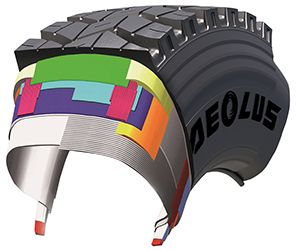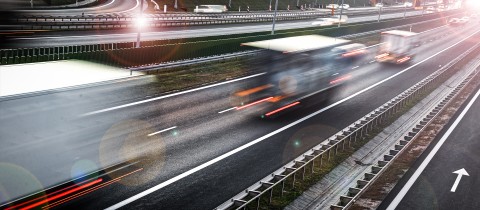Tread, shoulder and side-walls of truck tyres
Before you actually purchase a new truck tyre, it would be wise to consider the ideal construction for your specific situation. This allows you to quickly discover which requirements truck tyres must meet when it comes to their tread, shoulder and side-wall. We have provided an overview of the most useful information.
Rubber type, pressure distribution and shape of contact surface
When a tyre drives straight forwards, we refer to the contact area between the tyre and the road surface as the tread. When selecting an appropriate tyre, it is important to consider the type of rubber used to create the tread, because this has a major impact on its wear resistance. Pressure distribution and the shape of the contact surface also influence the life-span of the tread. The pattern - which consists of ridges, grooves and strips - primarily determines the shape of the contact surface. For example, a larger contact surface ensures more grip, but will also degrade faster.
Here are the ideal properties for the tread:
- The lowest possible rolling resistance;
- Maximum power transfer in all weather conditions;
- Properties which are effective at preventing aquaplaning;
- Effective directional stability;
- Minimum rolling noise and good noise absorption;
- High robustness against damage and collisions;
- Uniform wear and high wear resistance.
Round or square shoulders
The area between the side-wall and tread is referred to as the shoulder. When you go around a bend, this part of the tyre will also come into contact with the surface. Various types of shoulders are available:
- Round shoulders help to improve life-span and keep wear to a minimum.
- Square shoulders help to ensure good rolling resistance, less aquaplaning and better power transfer on wet surfaces.

Protective side-wall
As the name suggests, side-walls are located at the side of the tyre. The main aim of a side-wall is to protect the casing against damage and the effects of moisture and the outside air. Small tears in the side-wall can also be caused by sunlight and ozone. Would you like extra protection? Then opt for an extra layer on top of the existing side-wall. This can, for example, be useful for inner-city buses. There is no separate marking for a reinforced side-wall, but our experts know exactly which tyres are suitable for your specific situation.
Like to know more?
Do you need advice? Please contact us, our experts will be pleased to assist you. Contact our experts at +31 (0)523 - 850 850 or by e-mail to info@heuver.com. You can also read all about trucks on the truck knowledge-page.

